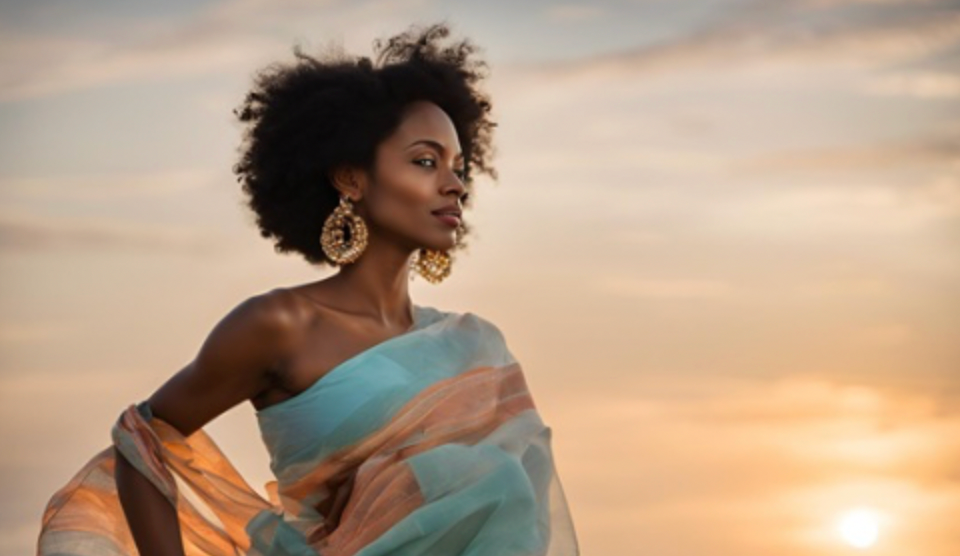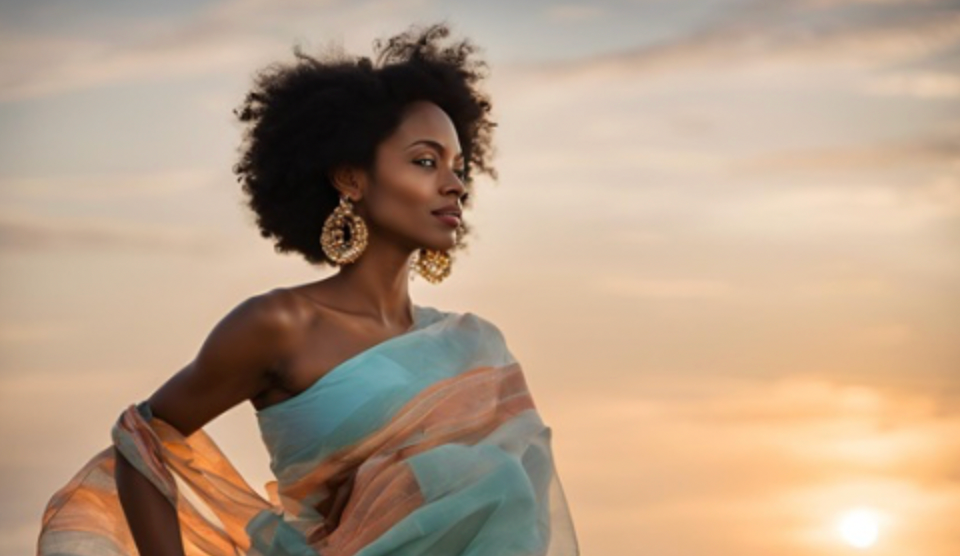"Weaving Heritage: The Artistry Behind Sarees
The creation of a saree is not just a craft but a legacy passed down through generations. Each saree reflects the rich cultural history of the region it originates from, with techniques honed over centuries. The weavers, often belonging to family traditions that have been practicing the art for generations, pour their knowledge and skills into every piece they create.
For instance, the Banarasi saree is renowned for its luxurious silk and intricate zari work, a result of techniques that have been perfected over hundreds of years in the holy city of Varanasi. The intricate motifs, often inspired by Mughal architecture, represent not just aesthetic beauty but a deeper cultural connection to India’s historical past. These sarees often take days, if not weeks, to complete, with the weavers ensuring that every thread and design is meticulously aligned.
Similarly, Kanjeevaram sarees, originating from Tamil Nadu, are a true embodiment of grandeur. They are woven from pure silk and traditionally feature heavy borders adorned with intricate designs of temples, peacocks, and other divine motifs. The silk used in these sarees is known for its durability and shine, making it a cherished possession for many families. The richness and vibrancy of the Kanjeevaram saree symbolize prosperity and auspiciousness, which is why they are often chosen for significant life events such as weddings.
From Yarn to Fabric: The Beginning of a Saree

While the traditional styles of weaving and embroidery remain at the heart of saree creation, contemporary designs have seamlessly integrated into the world of sarees. Designers now combine traditional techniques with modern elements, incorporating influences from global fashion trends while still respecting the roots of the saree. This fusion has given rise to new saree styles, such as pre-stitched sarees and saree gowns, making the attire even more accessible to the modern woman.
Today, sarees are not just worn for special occasions; they have become a statement of identity, worn with pride by women across the world. Whether for a corporate event, a family gathering, or a grand wedding, sarees have evolved to fit every occasion, while retaining their cultural significance. The vibrant hues and intricate designs continue to capture the imagination of those who wear them and those who admire their craftsmanship.
Embroidery and Embellishments: Adding a Touch of Opulence
 While the traditional styles of weaving and embroidery remain at the heart of saree creation, contemporary designs have seamlessly integrated into the world of sarees. Designers now combine traditional techniques with modern elements, incorporating influences from global fashion trends while still respecting the roots of the saree. This fusion has given rise to new saree styles, such as pre-stitched sarees and saree gowns, making the attire even more accessible to the modern woman.
While the traditional styles of weaving and embroidery remain at the heart of saree creation, contemporary designs have seamlessly integrated into the world of sarees. Designers now combine traditional techniques with modern elements, incorporating influences from global fashion trends while still respecting the roots of the saree. This fusion has given rise to new saree styles, such as pre-stitched sarees and saree gowns, making the attire even more accessible to the modern woman.
Today, sarees are not just worn for special occasions; they have become a statement of identity, worn with pride by women across the world. Whether for a corporate event, a family gathering, or a grand wedding, sarees have evolved to fit every occasion, while retaining their cultural significance. The vibrant hues and intricate designs continue to capture the imagination of those who wear them and those who admire their craftsmanship.
The Saree: A Cultural Symbol of Grace and Elegance
Beyond its visual beauty, the saree carries with it a deep cultural symbolism. It represents not just the tradition and heritage of India, but also the grace and strength of the women who wear it. Each fold of the saree tells a story of culture, history, and artistry. The process of draping a saree itself is an art, with every style of draping symbolizing something unique—whether it is the modest elegance of the Bengali drape or the regal and royal look of the Maharashtrian style.
Worn across different regions of India, the saree is often paired with unique accessories such as traditional jewelry, the mangalsutra, and intricate bangles, further enhancing the overall appeal. The saree is more than just an outfit; it’s an experience that connects women to their roots and to the history of the Indian subcontinent.
As the world becomes more globalized, the saree continues to hold its ground as a symbol of both cultural pride and modern fashion. It is a garment that never goes out of style, standing the test of time with its ever-evolving beauty and grace.

The Final Touch: Draping the Saree with Grace
Once the saree is ready, it is time to drape it with grace and elegance. The way a saree is draped can enhance its beauty, showcasing the craftsmanship and artistry that went into its creation. Whether it is a traditional Nivi drape or a modern fusion style, the saree becomes a statement of sophistication and luxury when worn with confidence.

Next time you admire a saree, take a moment to appreciate the hard work and dedication of the artisans who bring these pieces of art to life. The world of sarees is a testament to the timeless beauty of traditional craftsmanship, making each saree a luxurious masterpiece worth treasuring.
"Discover the Soul of India, One Saree at a Time."




